
Roots
To truly grasp the intricate symphony of textured hair, one must first listen for the echoes of its very beginnings, not just in the womb, but in the enduring legacy of our ancestors. For centuries, the rich coils, waves, and kinks that adorn heads across the diaspora have told stories of resilience, identity, and profound cultural connection. The very shape and behavior of textured hair strands, deeply rooted in their follicular origins, carry within them generations of shared wisdom and inherited beauty. Understanding how hair follicles vary in textured hair is not a sterile scientific inquiry; it is an act of reconnection, a gentle opening of a living, breathing archive of ancestral knowledge.

Hair Anatomy and Physiological Specificity
At its core, hair is a complex biological structure, yet within the common blueprint, remarkable differences arise. The hair follicle, a microscopic organ nestled within the scalp, stands as the architect of our hair’s visible form. It is here, deep beneath the skin’s surface, that the story of texture truly begins. For individuals with textured hair, the follicle is not merely a straight, cylindrical tube.
Rather, it assumes an elliptical or oval shape , and often curves significantly even before the hair strand emerges from the scalp. This curvature, frequently described as an S-shape or a retro-curvature at the hair bulb, dictates the coiling nature of the hair fiber itself. The more pronounced the oval or flat shape of the follicle, the tighter the resulting curl or coil.
Consider this ❉ while straight hair typically grows from round follicles, allowing the hair to grow evenly, textured hair originates from these distinctively curved and flattened follicles, which cause the hair to twist and coil as it grows. This difference extends to the angle at which the follicle itself is positioned beneath the skin. Straight hair follicles often sit more vertically, while those producing textured hair are angled, influencing the spiral growth pattern. Such fundamental anatomical variations mean that even at a microscopic level, textured hair possesses unique characteristics that influence its physical properties and its needs.
The intrinsic curvature of the hair follicle acts as the primary determinant of textured hair’s distinctive coils, a biological blueprint passed down through generations.

Classification Systems and Heritage
Throughout history, and certainly in more recent times, attempts have been made to classify hair types. The well-known Andre Walker hair typing system, created in the 1990s, categorizes hair into four main types—straight, wavy, curly, and coily—with subtypes from A to C. While this system has offered a common language for many, its origins and application bear scrutiny through a heritage lens.
Historically, hair typing systems, even before Walker’s, sometimes inadvertently reinforced societal biases. Eugen Fischer, a Nazi scientist in the early 20th century, even developed tools to classify proximity to “whiteness” based on hair color and texture, promoting deeply flawed and harmful eugenicist ideas.
Yet, even with these problematic historical associations, understanding a classification system can provide a framework for care. For textured hair, Types 3 (curly) and 4 (coily) are most relevant. These types represent a spectrum of curl patterns, from loose spirals to tight, zig-zag coils. The significant differences in follicular shape and angle underpinning these categories are precisely why a one-size-fits-all approach to hair care falls short for textured strands.
The history of Black and mixed-race communities consistently shows an innate understanding of these variations, long before scientific classification emerged. Ancestral knowledge of how certain hair types behaved, how they responded to moisture, and what treatments suited them best was woven into daily life, often through observation and communal wisdom.

What Historical Hair Lexicon Defined Textured Hair?
Long before modern scientific terms, communities used descriptive language rooted in observation and cultural significance to speak of their hair. While explicit terms for “follicle shape” might not have been present in historical vernacular, the lived experience of different hair textures informed countless names for various curl patterns and the hairstyles they created. In 15th-century West Africa, hair was a powerful identifier, signaling age, religion, rank, marital status, and family groups.
The terminology used was not merely descriptive of physical attributes but laden with social and spiritual weight. Consider the rich vocabulary that arose from these experiences:
- Kinky Hair ❉ Often refers to very tightly coiled or zig-zag patterns, common in African hair. Its descriptive power lies in its direct evocation of the hair’s compact nature.
- Coily Hair ❉ This term speaks to the spring-like, helical formation of individual strands, often with significant shrinkage. It reflects the hair’s natural inclination to wind upon itself.
- Threaded Hair ❉ A term tied directly to ancient West African styling practices like “Irun Kiko” among the Yoruba people, where hair was wrapped with thread. This practice was not merely aesthetic but protected the hair from breakage and stretched it, inherently acknowledging its unique texture.
These terms, whether ancient or more contemporary, spring from a direct relationship with the hair, informed by the very way it grows from the scalp and forms its patterns. They are, in a sense, a cultural mapping of the biological reality of textured hair follicles.
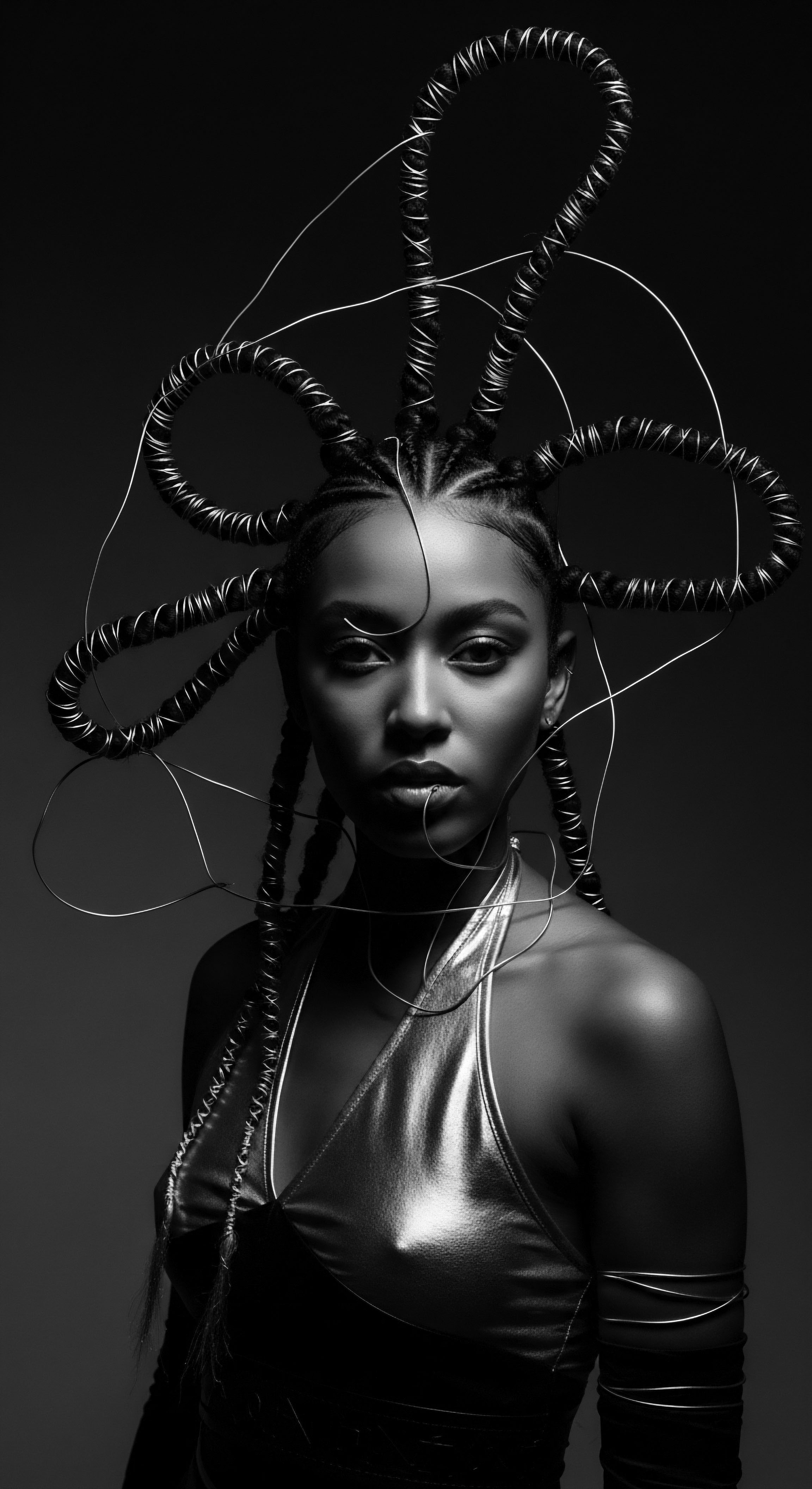
Hair Growth Cycles and Ancestral Influences
The cyclical nature of hair growth—anagen (growth), catagen (transition), and telogen (rest)—is universal. However, factors influencing these cycles, particularly for textured hair, have always been at play, both biologically and ancestrally. Afro-textured hair generally experiences a slower growth rate compared to Asian or Caucasian hair, averaging around 0.9 cm per month.
Additionally, studies suggest a lower follicular density in individuals of African descent compared to Caucasians. These characteristics, rooted in the very structure of the follicle and the genetic blueprint, have historically influenced how communities viewed and cared for their hair.
For generations, ancestral practices honed ways to support hair health within these inherent biological realities. The emphasis on protective styles, gentle manipulation, and the use of natural emollients can be seen as an intuitive response to the unique physiology of textured hair. For instance, the use of shea butter, with a history spanning over 3,000 years in West and Central Africa, was not just for skin but a foundational element of hair care.
Its ability to moisturize and protect likely served as an ancient buffer against the natural dryness that textured hair, due to its coiled structure, can experience because scalp oils find it harder to travel down the shaft. These practices, passed down through oral traditions and communal learning, represent a sophisticated understanding of hair biology, long before microscopes revealed the follicle’s precise shape.

Ritual
The journey of textured hair, from its follicular beginnings, unfolds into a rich tapestry of care rituals and styling traditions. These practices, honed over centuries, represent not just aesthetic choices but profound acts of cultural preservation and self-expression. The distinct characteristics of textured hair follicles fundamentally shaped how ancestral communities interacted with their strands, leading to a heritage of styling that speaks volumes about ingenuity, communal bonds, and enduring identity.

Protective Styling and Ancient Roots
Protective styles, a cornerstone of textured hair care today, trace their origins directly to ancient African civilizations. These styles, such as braids, twists, and cornrows, were not merely decorative. They served practical purposes ❉ safeguarding delicate strands from environmental elements, minimizing manipulation, and promoting length retention. The unique helical and often flattened shape of textured hair follicles, which makes the hair more prone to breakage during combing compared to straight hair, underscored the need for such methods.
For instance, historical records confirm the presence of hair threading, known as Irun Kiko among the Yoruba people of Nigeria, as early as the 15th century. This intricate method of wrapping hair with thread protected the hair and allowed for elongation, an ancient predecessor to modern heat-free stretching techniques. Zulu knots, originating from the Zulu tribe of South Africa, were not simply a style but symbols of femininity and beauty, and often elevated for spiritual significance as the highest point of the body. These practices show a deep, intuitive understanding of textured hair’s physical vulnerability and how to fortify it through styling that respects its natural architecture.
| Ancestral Practice Hair Threading (Yoruba, West Africa) |
| Follicular Connection & Benefit Addresses the natural tendency of textured hair to shrink and coil tightly due to elliptical follicles, protecting it from breakage and promoting length. |
| Ancestral Practice Bantu Knots (Zulu, Southern Africa) |
| Follicular Connection & Benefit Creates compact, contained sections that minimize tangling and friction, which can occur readily with highly curved hair shafts emerging from S-shaped follicles. |
| Ancestral Practice Natural Oils and Butters (e.g. Shea Butter, throughout West/Central Africa) |
| Follicular Connection & Benefit Compensates for the reduced distribution of natural sebum along coiled strands, a result of the hair growing from angled follicles. |
| Ancestral Practice These historical styling techniques and care rituals emerged from centuries of living with and understanding the unique properties of textured hair, inherently responding to its follicular variations. |

Natural Styling and Definition Techniques
The pursuit of definition in textured hair, a hallmark of contemporary natural hair aesthetics, mirrors ancestral reverence for distinct curl patterns. The way hair springs from its curved follicle dictates its inherent curl, and traditional methods often sought to enhance, rather than suppress, this natural inclination. Communities across Africa and the diaspora used various plant-based gels, clays, and butters to sculpt and define, working with the hair’s natural tendency to coil.
The practice of using natural clays, such as Rhassoul Clay from Morocco, for cleansing and defining curls, showcases an ancient understanding of how to manage sebum distribution and cleanse without stripping. Given that the angled growth of textured hair follicles can make it more challenging for natural oils to travel down the hair shaft, leading to dryness, these traditional ingredients provided necessary hydration and slip for styling. The rhythm of wash days, detangling sessions, and setting rituals was, and remains, a dialogue with the hair’s inherent structure, profoundly shaped by the follicle.
Styling textured hair is an echo of generations past, a continuous conversation with the hair’s very origins in the curved follicle, honoring its coils and coils.

Wigs, Hair Extensions, and Historical Context
The use of wigs and hair extensions might seem like a modern phenomenon, yet their presence in the heritage of textured hair spans millennia. Ancient Egyptians, for example, wore elaborate wigs not just for beauty but to signify status, age, and gender, with archaeological findings revealing 3,000-year-old weave extensions and multi-colored additions. These adornments allowed for diverse expressions of identity, particularly important in societies where hair communicated so much.
During the transatlantic slave trade, when enslaved Africans often had their heads shaved for sanitary reasons, they experienced a traumatic loss of identity tied to their hair. Despite these devastating circumstances, many continued to braid their hair to stay connected to their culture and maintain hygiene while working. Wigs and extensions, later on, became tools for survival and adaptation within oppressive systems, sometimes used to conform to Eurocentric beauty standards imposed during colonial influences.
However, they also provided a means of self-preservation and the ability to reclaim a sense of beauty and dignity in challenging environments. The ability of extensions to mimic desired textures, irrespective of the underlying follicle shape, provided versatility and a means of cultural navigation through tumultuous historical periods.

Heat Styling and Thermal Reconditioning
The history of heat styling for textured hair, particularly for straightening, is complex and deeply intertwined with socio-political shifts. The desire to mimic European hair textures, often stemming from pervasive racial hierarchies during colonialism and slavery, popularized methods like hot combs and chemical relaxers. Madam C. J.
Walker, a pioneering African American entrepreneur in the late 19th and early 20th centuries, developed products and tools, including the hot comb, to address hair care needs for Black women. While her innovations offered solutions for hair maintenance and styling, they also reflected a period where conformity to dominant beauty ideals was often a means of economic and social survival.
From a follicular perspective, heat styling temporarily alters the hair’s natural curl pattern, which is primarily dictated by the elliptical shape and curved growth of the follicle. The disulfide bonds within the hair’s keratin structure, responsible for the hair’s coiling, are temporarily broken and re-formed during heat application. While modern thermal reconditioning offers more advanced and often less damaging options than historical methods, the core principle remains ❉ manipulating the hair shaft’s natural shape, which originates from its follicle.
A safety-first approach today prioritizes conditioning and heat protection, acknowledging the inherent fragility of textured hair, which is more prone to breakage due to its unique structure. The historical relationship with heat styling serves as a potent reminder of the enduring connection between hair practices and the broader struggles for self-acceptance and cultural affirmation.

The Complete Textured Hair Toolkit
The tools used for textured hair care, both ancient and modern, reflect a deep understanding of its unique needs. From the hands of an elder braiding intricate patterns to the modern detangling brush, each tool speaks to a lineage of thoughtful care.
- Combs and Picks ❉ Historically, wide-toothed combs, often crafted from wood or bone, were used to navigate the dense, coily strands. Today, these tools remain essential for gentle detangling, minimizing the mechanical stress that can lead to breakage in hair emerging from highly curved follicles.
- Hair Thread ❉ Used in practices like Irun Kiko, fine thread allowed for manipulation and protection of hair, reducing tension on the scalp and preserving length by stretching the natural curl pattern.
- Headrests ❉ In some African cultures, carved headrests were used at night to preserve elaborate hairstyles, particularly high topknots worn by Zulu women, preventing them from flattening. This shows an ancient understanding of maintaining hair shape and minimizing friction, a precursor to modern sleep protection.
- Natural Brushes ❉ Brushes made from natural fibers helped to distribute natural oils from the scalp along the hair shaft, compensating for the difficulty sebum has in traveling down highly coiled strands.
Each tool, in its historical and contemporary form, is an extension of the human hand’s desire to honor and sustain textured hair, a direct response to the specific challenges and beauties presented by its follicular architecture.
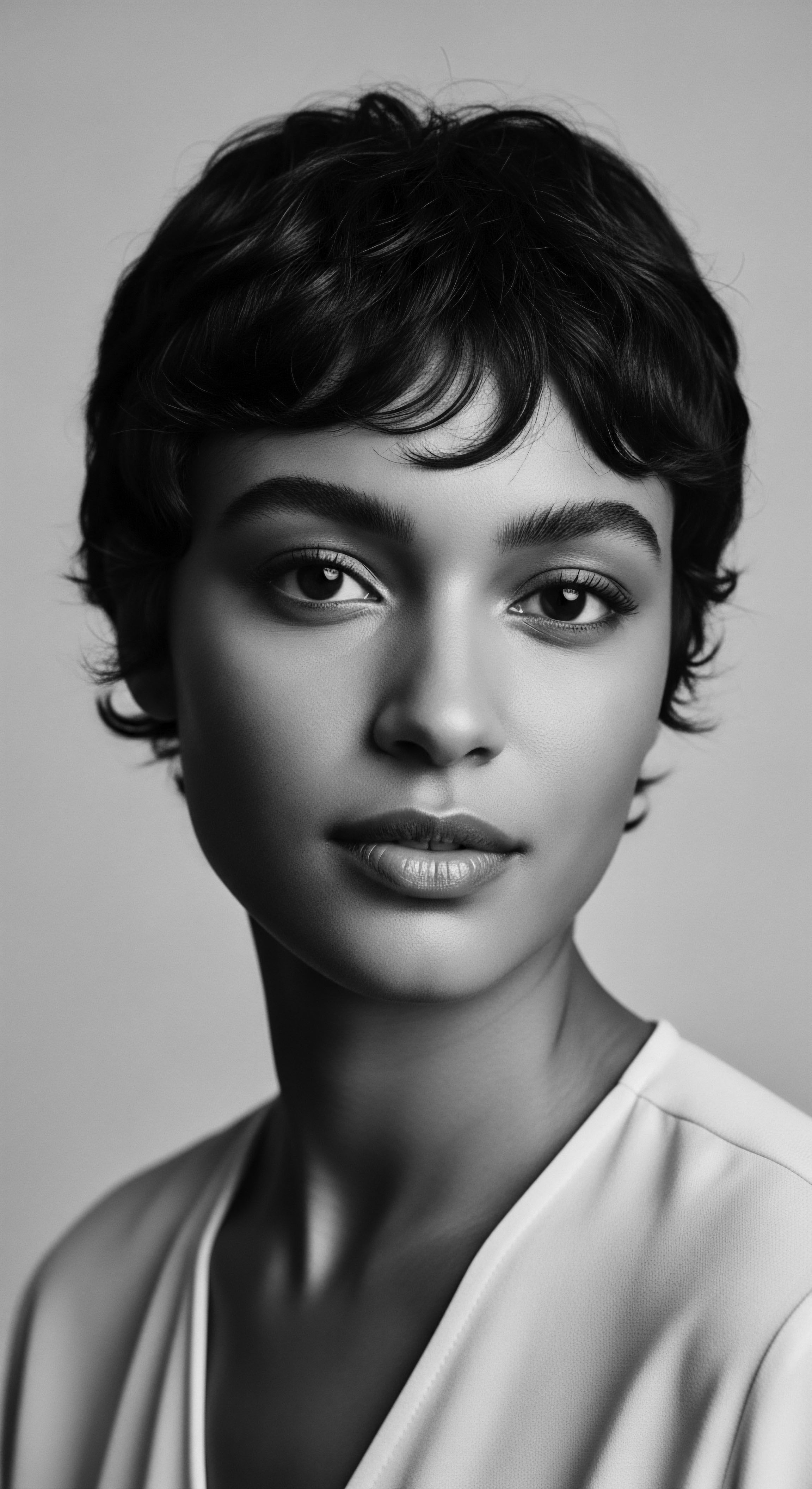
Relay
The dialogue between how hair follicles vary in textured hair and the holistic care it demands is a relay race across generations, a continuous passing of wisdom and adaptation. This segment dives into the sophisticated interplay of science and ancestral knowledge, revealing how deep understanding of the follicle informs regimens, nighttime rituals, and problem-solving, all while grounding itself in heritage.

Building Personalized Textured Hair Regimens from Ancestral Wisdom
Creating a care regimen for textured hair is not a prescriptive task; rather, it is akin to constructing a personalized symphony, each note informed by the hair’s unique follicular composition and a rich heritage of care. The inherent differences in hair follicle shape—from the degree of ovalness to the angle of emergence—translate directly into variations in curl tightness, hair density, and how well natural oils traverse the strand. Ancestral communities, without the aid of microscopes, keenly observed these nuances. Their rituals were not random acts but carefully considered responses to what the hair genuinely needed.
For instance, the relatively lower follicular density observed in individuals of African descent combined with the elliptical nature of the hair shaft that makes it prone to dryness, led to traditional emphasis on moisture retention. This manifested in consistent oiling practices with ingredients like Shea Butter and Marula Oil, both historically used to moisturize and protect hair. A personalized regimen today, therefore, echoes these ancient practices by prioritizing hydration and gentle handling, directly addressing the physical predispositions originating from the follicle.
- Cleansing with Care ❉ Ancient practices often favored natural washes that cleansed without stripping. Rhassoul clay, for example, offered thorough cleaning while respecting the hair’s natural oils, a response to the inherent dryness associated with textured hair. Modern regimens continue this legacy by advocating for sulfate-free cleansers.
- Deep Conditioning ❉ The coiling of textured hair makes it harder for sebum to travel down the shaft, creating a natural inclination towards dryness. Ancestral deep conditioning might have involved prolonged applications of rich plant butters or herbal infusions, allowing ingredients to truly penetrate and nourish.
- Protective Styling as Foundation ❉ The prevalence of braids, twists, and threading historically protected fragile hair. Incorporating these styles into a modern regimen acknowledges the hair’s susceptibility to mechanical stress due to its follicular shape.

The Nighttime Sanctuary ❉ Essential Sleep Protection and Bonnet Wisdom
The ritual of preparing hair for rest is a profound act of preservation, directly countering the vulnerabilities stemming from textured hair’s follicular structure. The very curvature of the hair strand, born from its uniquely shaped follicle, means hair is more prone to tangling and friction-induced breakage when rubbing against abrasive surfaces. Ancestors understood this intuitively.
The use of head coverings and specialized sleeping practices for hair preservation extends deep into history. In some African cultures, elaborate hairstyles, particularly towering topknots, were preserved overnight with the use of carved Headrests. These headrests allowed the hair to remain elevated and undisturbed, minimizing friction and flattening, a clear ancestral understanding of maintaining hair structure through sleep. This ancient wisdom laid the groundwork for the modern bonnet, satin scarf, or silk pillowcase.
These accessories create a smooth, low-friction environment, protecting the hair from the mechanical stress that can compromise the integrity of strands emerging from those delicate, curved follicles. This nightly ritual safeguards moisture, prevents tangles, and preserves the curl pattern, directly addressing the hair’s inherent needs.
The nightly ritual of protecting textured hair during sleep is a contemporary echo of ancestral wisdom, preserving the integrity of strands born from distinctly curved follicles.

Ingredient Deep Dives for Textured Hair Needs
The efficacy of specific ingredients for textured hair can often be traced back to their interaction with the hair’s unique follicular characteristics. The challenges of dryness and breakage, common to textured hair, arise from the elliptical shape and curved growth of the follicles, which impede the even distribution of natural scalp oils. This biological reality historically drove the selection of certain plant-based ingredients.
Consider Shea Butter, a substance revered in West and Central Africa for over three millennia. Its rich composition of fatty acids and vitamins makes it an exceptional emollient. Its historical use for hair care directly addresses the dryness associated with textured hair, providing external lubrication where natural sebum struggles to reach. Another ingredient, Rhassoul Clay from Morocco, known for its deep cleansing properties, offered a gentle alternative to harsher cleansers.
This respect for maintaining the hair’s natural moisture balance, crucial for strands prone to dryness from their follicular structure, was inherent in ancient practices. The wisdom of these traditions, rooted in centuries of observation, now finds validation in scientific understanding.

Textured Hair Problem Solving
Challenges such as dryness, breakage, and tangling are commonly associated with textured hair, and these issues are intimately linked to how hair follicles vary. The elliptical cross-section and retro-curvature of African hair follicles make the hair shaft more fragile and susceptible to breakage compared to straight hair. The tight coiling also means that hair strands easily interlock, leading to tangles and knots, especially during combing. Ancestral solutions to these problems were born from necessity and keen observation.
For instance, the use of slippery, mucilaginous plants, such as Okra or Flaxseed, for detangling was a common practice in various African and diasporic communities. These natural ingredients provided the “slip” necessary to gently separate strands without causing undue stress on the hair shaft, effectively mitigating the tangling that results from the hair’s spiral growth. The importance of protective styles, as previously discussed, also directly addresses the problem of breakage by minimizing external manipulation and environmental exposure. Modern hair care continues to draw from these historical blueprints, offering detangling conditioners and leave-ins that mimic the slip of ancestral plant-based remedies, acknowledging the fundamental follicular characteristics that make textured hair behave as it does.
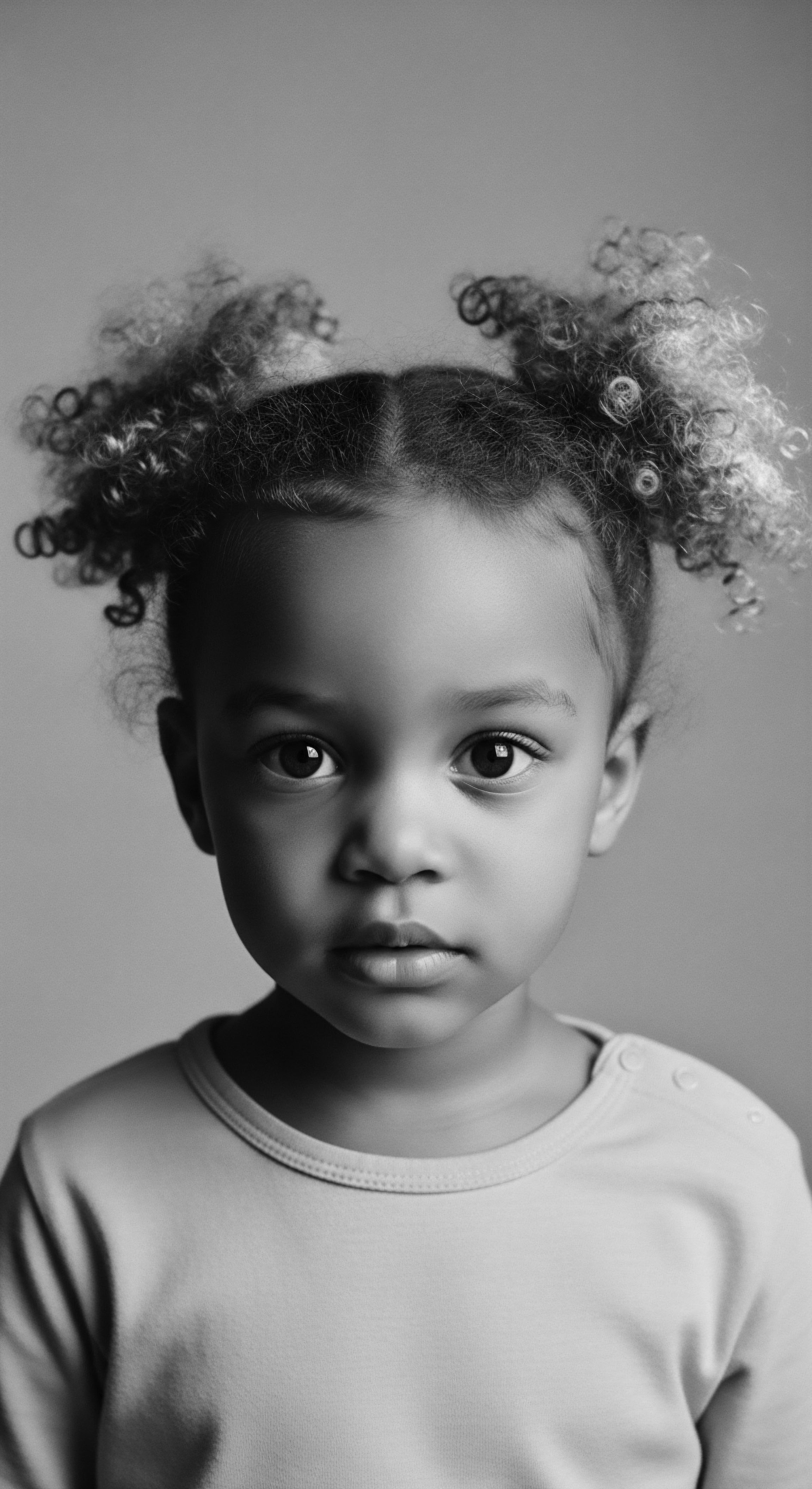
How Can Holistic Wellness Support Hair Health with Textured Follicle Variations?
The holistic approach to hair health, deeply embedded in ancestral wellness philosophies, acknowledges that the vitality of textured hair transcends topical applications. The follicle, as a living organ, is influenced by the body’s internal state. Factors like nutrition, stress, and overall well-being impact hair growth cycles and even the quality of the hair strand emerging from the follicle.
Genetic variations, which dictate follicle shape and curl pattern, also influence traits like hair thickness and density. A study found that Caucasians generally have larger terminal hair follicles than Africans and Asians, which can relate to differences in hair thickness.
Ancestral wisdom often connected hair health to broader aspects of life. Consider the importance of certain foods, herbs, and communal well-being. A diet rich in nutrient-dense foods, for example, directly supports the cellular activity within the hair follicle, promoting optimal hair growth and strength. Traditional diets, often plant-based and rich in essential fatty acids and vitamins, inherently supported healthy hair.
The emphasis on community and spiritual practices, found in many African societies, served as a buffer against stress, which can negatively impact hair cycles and contribute to issues like hair thinning. This interconnected view recognizes that the hair follicle, a tiny marvel of biology, reflects the overall health and harmony of the individual, echoing the integrated worldview of those who came before us.
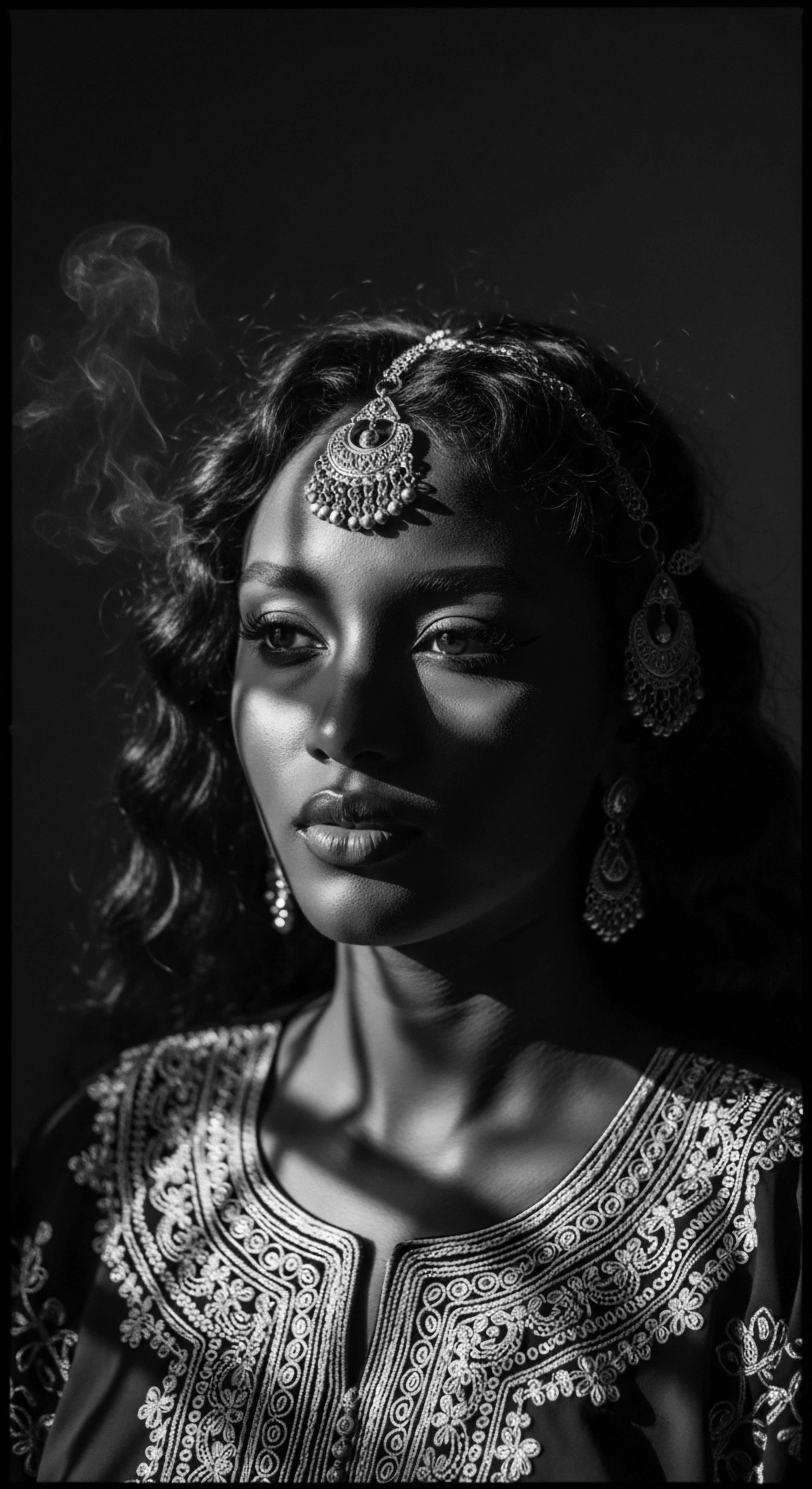
Relay
The journey of understanding how hair follicles vary in textured hair is a continuous relay, passing insights from elemental biology through living traditions to shape our futures. This exploration deepens into the specific, often subtle, morphological distinctions of textured hair follicles, their biomechanical implications, and the profound cultural and historical narratives woven into their very structure.

Unpacking Follicular Curvature and Asymmetry
The defining characteristic of textured hair follicles lies in their inherent curvature and asymmetry. Unlike the typically straight, cylindrical follicles that yield straight hair, follicles producing textured hair are distinctly curved, often resembling an S-shape or a hockey stick, and possess an elliptical or even flattened cross-section. This shape is not uniform; the follicle can curve multiple times within the dermis, contributing to the tight coiling observed in hair types like 4C.
The degree of this curvature directly correlates with the tightness of the resulting curl. A more flattened oval follicle creates a tighter, more pronounced coil.
This follicular architecture has profound biomechanical implications. Hair strands emerging from such follicles are not round but also elliptical in cross-section, and they twist as they grow. This twisting and coiling inherently create points of stress along the hair shaft. While African hair is not intrinsically weaker, its high curvature makes it more susceptible to mechanical extension and breakage.
This biological reality historically informed, and continues to inform, the gentle handling and protective styling practices observed in Black and mixed-race communities. The very act of combing or manipulating highly textured hair requires a mindful approach, a wisdom passed down through generations who intuitively understood these delicate structures.

What Role Does the Hair Bulb Play in Textured Hair Formation?
The hair bulb, located at the very base of the follicle, is a bustling center of cellular activity, responsible for producing the hair fiber. In textured hair, the hair bulb itself can exhibit a retro-curvature, meaning it curves backward, further contributing to the S-shaped or spiral growth of the follicle above it. This retro-curvature is a defining feature of Afro-textured hair.
The cells within the hair matrix, surrounding the dermal papilla in the bulb, divide and differentiate asymmetrically in curly hair, contributing to the elliptical shape of the hair fiber. This asymmetry in cell division is a critical, underlying biological mechanism for curl formation.
Beyond its biological function, the hair bulb holds symbolic weight in many ancestral traditions. As the deepest point of connection to the body, it represents the root of identity, vitality, and lineage. Care for the scalp and the “roots” of the hair—metaphorically and literally—has always been central to wellness practices in communities with textured hair. This deep-seated respect for the source of hair growth aligns with the scientific understanding of the hair bulb as the hair’s primary engine, a testament to the enduring wisdom embedded in heritage.

Genetic Insights into Curl Pattern and Follicle Shape
The variations in hair follicle shape are predominantly genetically determined. Research confirms that genes play a significant role in dictating the natural curl pattern, thickness, and density of hair. While the inheritance of hair curl is often considered an “additive” trait, meaning the amount of curl depends on the number of curly hair gene variants inherited, the precise interplay of these genes is complex.
One gene identified as a primary driver of hair shape is the Trichohyalin (TCHH) Gene, which produces a protein vital for strengthening growing hair. Variants within the TCHH gene are associated with different hair shapes across populations. For instance, the way cells divide and produce proteins in curly hair is asymmetrical, correlating with the bends in the curved follicle and resulting in an elliptical hair fiber.
This genetic predisposition for unique follicle shapes and the resulting curl patterns has deeply informed how various communities have viewed and maintained their hair through time. The genetic legacy of textured hair is not merely a biological fact; it is a profound aspect of ancestral heritage, influencing not only hair morphology but also cultural practices of adornment and care.
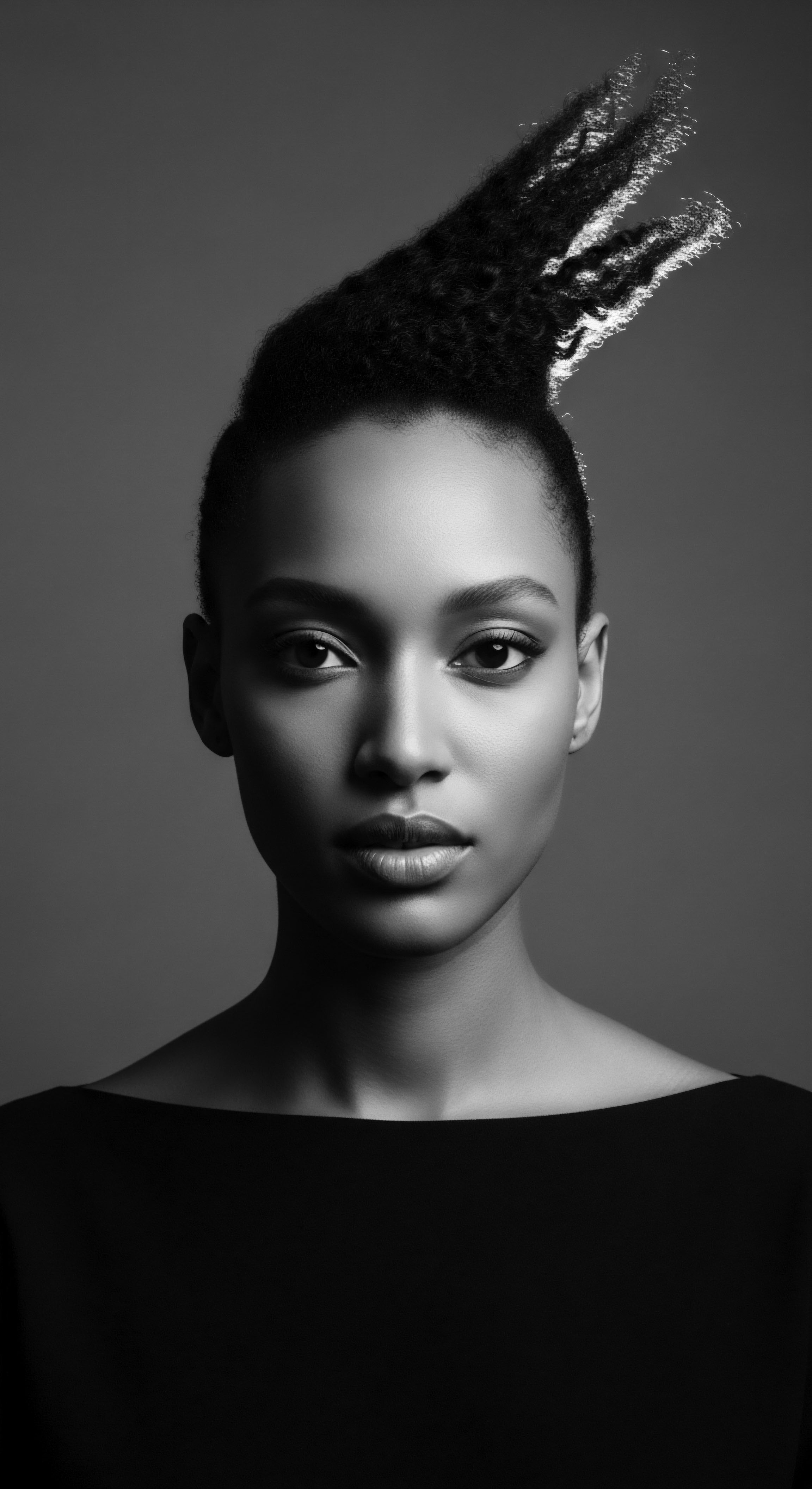
The Biogeography of Follicular Adaptations
The global distribution of different hair textures and their underlying follicle variations tells a story of human adaptation and migration. The prevalence of tightly coiled hair in populations of African descent, for example, is widely considered an evolutionary adaptation. Some scholars suggest that Afro-textured hair, with its spiraled structure and wider follicular pattern, evolved to protect the scalp from intense solar radiation while allowing for air circulation, providing a cooling effect in hot climates. This makes the variations in hair follicles a fascinating example of how human biology adapted to diverse environments across continents.
The distinct anatomical features of African hair follicles, including their elliptical cross-section and curved shape, are recognized in scientific literature. While all human hair shares basic chemical constituents like keratin, the structural variations are significant. This unique morphology, shaped by environmental pressures over millennia, then became a part of the genetic heritage of these populations.
Understanding these biogeographical adaptations provides a deeper context for appreciating the diversity of textured hair and the ancestral wisdom that emerged in response to living harmoniously with these unique biological traits. The scientific explanation of follicular variation thus becomes another lens through which to honor the rich tapestry of human history and cultural resilience.
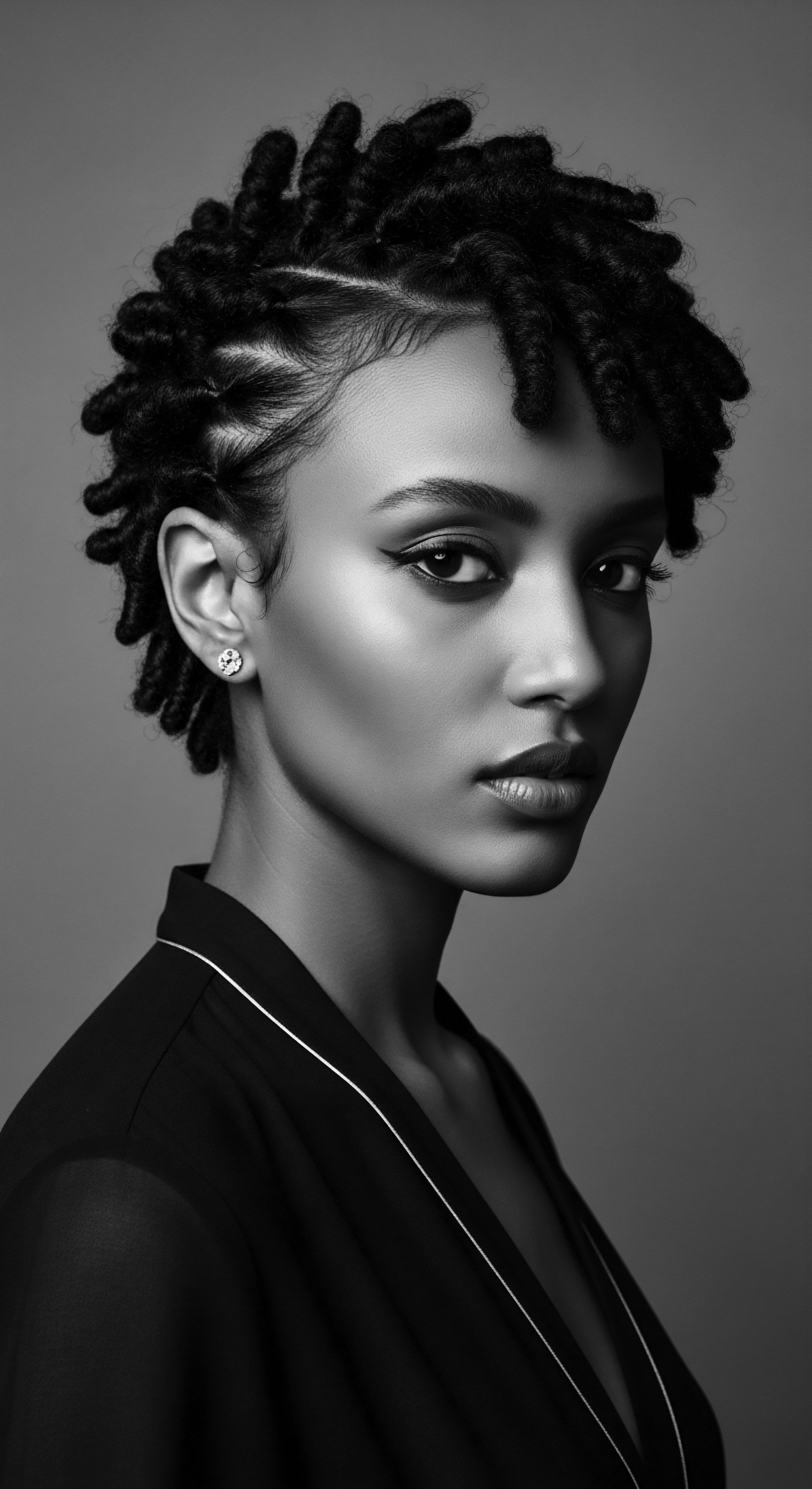
Reflection
The exploration of how hair follicles vary in textured hair leads us to a truth both scientific and deeply soulful ❉ textured hair is a living archive, a testament to enduring heritage. Its unique follicular architecture—the elliptical shape, the pronounced curvature, the asymmetrical growth—is not a mere biological accident. It is a biological blueprint shaped by millennia of adaptation, and a canvas upon which generations have etched stories of identity, resistance, and beauty. From the ancestral practices that intuitively understood the hair’s need for moisture and protection, to the modern scientist unraveling the genetic codes that dictate each coil, the journey is one of continuous discovery and profound respect.
The Soul of a Strand ethos calls upon us to view each hair fiber as more than keratin and bonds; it is a thread connecting us to those who came before, a silent witness to their resilience, their artistry, and their wisdom. Understanding the specificities of the textured hair follicle allows us to engage with our hair not as a challenge, but as an heirloom. It empowers us to choose care rituals that honor its ancestral design, to use ingredients that echo the earth’s nurturing embrace, and to wear styles that speak to a legacy of unbound expression. This knowledge is a gift, inviting us to celebrate the inherent magnificence of textured hair, recognizing that within every curve and coil lies the vibrant, unbroken spirit of a rich and powerful heritage.
References
- Abou-Mrad, E. & Ma, L. (2024). The Genomic Variation in Textured Hair ❉ Implications in Developing a Holistic Hair Care Routine. MDPI.
- Dutra, J. & Ribeiro, V. (2016). The Hair ❉ Structure and Ethnic Specificities. Silkbiotic.
- Giacomoni, P. U. & Maibach, H. I. (2012). Ethnic Differences in Skin Physiology, Hair Follicle Morphology and Follicular Penetration. Current Problems in Dermatology, 42, 144-154.
- Gummer, C. (2024). Curly By Design ❉ How Your Hair Follicles Shape Your Curls. Cabela.
- Khumalo, N. P. & Gumedze, F. (2019). Microscopic Characteristics of Scalp Hair Subjected to Cultural Styling Methods in Ghanaian African Females. Skin Appendage Disorders, 5(6), 335–343.
- Khumalo, N. P. & Trüeb, R. M. (2024). A Historical Journey of the Structure, Texture, and Identity of Afro-Textured Hair. British Journal of Dermatology.
- Loussouarn, G. (2016). African Hair ❉ Its Structure, Properties, and Unique Challenges. Journal of Cosmetic Dermatology, 15(4), 389-397.
- Okere, F. (2024). Ancient Gems ❉ A Historical Survey of African Beauty Techniques. Obscure Histories.
- Okere, F. (2024). The Globalization of Shea Butter. Obscure Histories.
- Patel, D. & Sharma, M. (2013). Hair and Scalp Disorders in Ethnic Populations. Journal of Drugs in Dermatology, 12(4), 420-427.
- Pereira, A. D. et al. (2020). Black women’s hair ❉ the main scalp dermatoses and aesthetic practices in women of African ethnicity. Anais Brasileiros de Dermatologia, 95(1), 12-21.
- Rovang, D. (2024). The Globalization of Shea Butter. Obscure Histories.
- Walker, A. (1997). Andre Talks Hair. Simon & Schuster.
- Yoshida, S. & Imokawa, G. (2009). Hair Follicle ❉ Anatomy and Physiology. Journal of Cosmetic Science, 60(2), 123-146.
- Zamani, A. (2023). Hair Types and Race Differences. The Belgravia Centre.
- Zulu, N. (2019). Isicholo/Hats. Zulu People, KwaZulu Natal.
